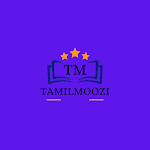Sepoys working in the British army were infact peasants in uniform. They were equallyaffected by the restructuring of the revenueadministration. The sepoy revolt and thesubsequent civil rebellion in various parts ofIndia had a deep-rooted connection with ruralmass. The first civil rebellion broke out in partsof the North-Western provinces and Oudh.These were the two regions from which the
sepoys were predominately recruited. A largenumber of Zamindars and Taluqdars werealso attracted to the rebellions as they had lost their various privileges under the Britishgovernment. The talukdar–peasant collectivewas a common effort to recover what theyhad lost. Similarly, artisans and handicraftspersons were equally affected by the dethroningof rulers of many Indian states, who were amajor source of patronage. The dumping ofBritish manufactures had ruined the Indian
handicrafts and thrown thousands of weaversout of employment. Collective anger against theBritish took the form of a people’s revolt
6th standard
Question paper - Click here to Download
Answer key - Click here to Download
This advance needed to be repaid with interest.The planters forced the peasant grow indigo,rather than food crops. At the end of the season,the planters paid the cultivators low prices fortheir indigo. Moreover, the small amount thepeasant earned was not enough to pay back thecash advance with interest. So they fell into debt.However, the peasants again would be forced toenter into another contract to grow indigo. Thepeasants were never able to clear their debts.Debts were often passed from father to son.
7th standard
Question paper - Click here to Download
Answer key - Click here to Download
Heavy taxation ruined agriculture.Famine deaths increased. The first recorded
incident of rioting against the moneylendersin the Deccan was in May 1875, in Supa a village near Poona. Similar cases of riots were reported from close to 30 villages in Poona and Ahmadnagar. The rioting was directed
mostly at the Gujarat moneylenders. Under British rule peasants were forced to pay revenue directly to the government. Also, under a new law moneylenders were allowed to attach the mortgaged land of the defaulters and auction
it off. This resulted in a transfer of lands from the cultivators to the non-cultivating classes. Trapped in the vicious cycle of debt and unable to pay the outstanding amount the peasant was forced to abandon cultivation.With the failure to annul the partitionmoderate leaders were forced to rethink theirstrategy and look for new techniques of protest.The boycott of British goods was one suchmethod. However, the agenda of SwadeshiMovement was still restricted to secure anannulment of partition and the moderateswere very much against utilising the campaignto start a full-fledged passive resistance. Themilitant nationalists, on the other hand, were
in favour of extending the movement beyond Bengal and to initiate a full-scale mass struggle.
8th standard
Question paper - Click here to Download
Answer key - Click here to Download
The Indian national movement wasrevived and also radicalised during the
Home Rule Movement (1916-1918), led byLokamanya Tilak and Annie Besant. WorldWar I and Indian’s participation in it was thebackground for the Home Rule League. WhenBritain declared war against Germany in 1914,the moderate and liberal leadership extendedtheir support to the British cause. It was hoped
that, in return, the British government wouldgive self-government after the war. Indiantroops were sent to several theatres of WorldWar. But the British administration remainednon-committal to such goals. What was seen
as a British betrayal to the Indian cause ofself-government led to a fresh call for a mass movement to pressurise the British government. The mutiny was equally supported byan aggrieved rural society of north India.Sepoys working in the British army were infact peasants in uniform. They were equallyaffected by the restructuring of the revenue administration. The sepoy revolt and the
subsequent civil rebellion in various parts of India had a deep-rooted connection with ruralmass. The first civil rebellion broke out in partsof the North-Western provinces and Oudh.These were the two regions from which thesepoys were predominately recruited. A largenumber of Zamindars and Taluqdars were
also attracted to the rebellions as they had lost their various privileges under the Britishgovernment. The talukdar–peasant collectivewas a common effort to recover what they had lost. Similarly, artisans and handicrafts persons were equally affected by the dethroning of rulers of many Indian states, who were a
major source of patronage. The dumping of British manufactures had ruined the Indian handicrafts and thrown thousands of weavers out of employment. Collective anger against the British took the form of a people’s revolt
9th standard
Question paper - Click here to Download
Answer key - Click here to Download







0 கருத்துகள்